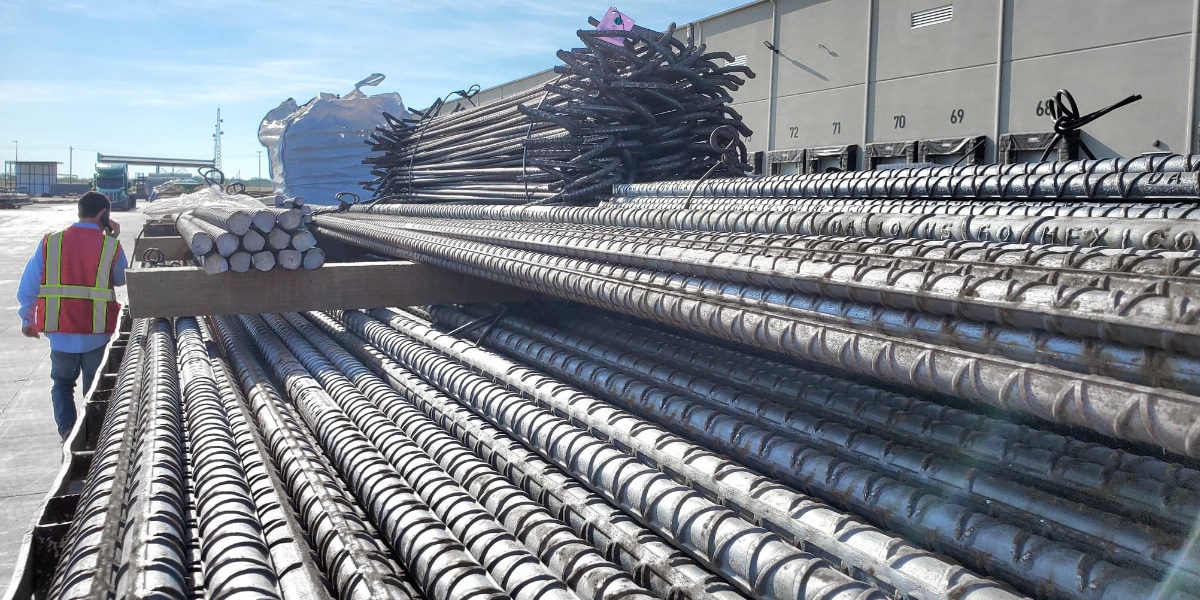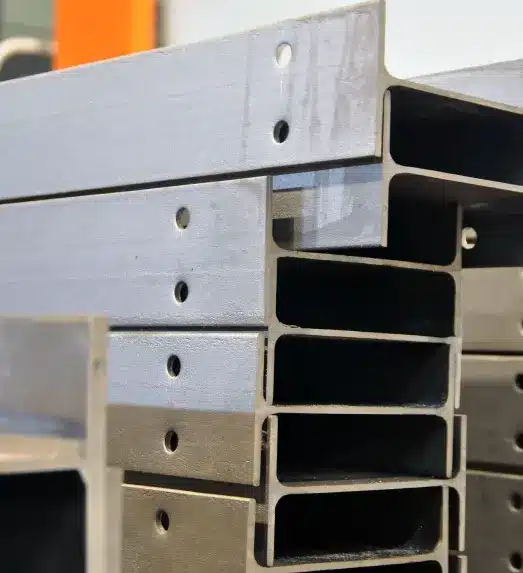As a construction products and solutions manufacturer, we understand the importance of using materials that enhance the durability and longevity of a structure. Reinforcement bars, also known as rebars, are a crucial component in reinforcing concrete structures.
Reinforcement bars are strong steel bars that are placed within concrete slabs to bolster its strength – giving a greater support and increasing the lifespan of your project by significantly reducing the sources of various stresses imposed on other elements within the infrastructure.
As a result, rebars help ensure that all structures can handle expected wear and tear over time.
In this article, we will discuss the impact of reinforcement bars on concrete durability and longevity and how they contribute to the overall strength and stability of a structure.
Benefits of Using Reinforcement Bars to Maximize Concrete Durability and Longevity
The use of reinforcement bars in concrete structures offers several benefits, including:
- Increased resistance to bending, cracking, and deformation
- Improved load distribution and structural stability
- Reduced shrinkage and cracking of the concrete
- Increased resistance to corrosion and other environmental factors
- Enhanced durability and longevity of the structure
Let’s see some details.
Increased resistance to bending, cracking, and deformation
Concrete is not particularly strong when it comes to tensile forces. Reinforcement bars are used to enhance the tensile strength of concrete by absorbing the tensile stress and transferring it back to the concrete, thereby helping to prevent it from cracking or bending.
Reinforcement bars are typically placed in strategic locations throughout the concrete structure, where they can provide the most support. Depending on the design and intended use of the structure, these bars may be spaced out at different intervals or arranged in specific patterns to provide optimal reinforcement.
Improved load distribution and structural stability
Reinforcement bars create a network of steel inside the concrete, which helps distribute the loads more evenly. Think of it like a spider web inside the concrete. When force is applied to the concrete, whether from the top or the sides, the reinforcement bars work together to resist the force.
Reduced shrinkage and cracking of the concrete
As concrete hardens, it undergoes a natural process of shrinking due to the evaporation of excess moisture. Moreover, if the concrete is not reinforced, this shrinkage can result in visible cracking and structural damage.
Since the bars are made of steel, which has a similar coefficient of thermal expansion to concrete, these reinforcement bars can provide an expansion restrain to prevent the concrete to suffer tension that may result in shrinking cracking when designed properly and combined with a cementitious mineral material.
Increased resistance to corrosion and other environmental factors
Concrete, on its own, is porous and can easily absorb water, chemicals, and other substances that can cause damage over time. However, when reinforcement bars are placed strategically throughout the concrete, they create a barrier that prevents these substances from penetrating the structure.
Furthermore, reinforcement bars are usually coated with a layer of epoxy or other protective material that helps to prevent corrosion. This is particularly important in areas that are exposed to moisture or salty air, as they can cause steel to rust and weaken over time. The use of coated reinforcement bars has been shown to significantly increase the lifespan of concrete structures and reduce maintenance costs.
Enhanced durability and longevity of the structure
This is mainly a result of the benefits described above. The load distribution and structural stability that helps the resistance against bending, cracking , and any deformation, as well as increased resistance to corrosion are crucial factors that result in a concrete structure that can continue to serve its purpose for many years with reduced maintenance requirements.
Choosing the Right Reinforcement Bars for Your Project
Choosing the right reinforcement bars for your construction project is critical to ensure the safety and longevity of the structure.
Some factors to consider when selecting reinforcement bars include the project’s design, the environmental conditions of the site, and the required strength of the structure.
Working with a reputable construction company that has experience in selecting and installing reinforcement bars is essential to ensure that the right materials are used for your project. In other words, the best way to do it is to contact with real experts.
Reinforcement bars play a critical role in enhancing the durability and longevity of concrete structures. Their use provides several benefits which include: improved load distribution, structural stability, and resistance to environmental factors.
When selecting a construction company for your project, make sure they have the expertise and experience to select and install the right reinforcement bars for your specific needs.
Regular maintenance of the bars is also crucial to ensure optimal durability and longevity of the structure.
And if you’re worried about the environmental impact of all this steel, don’t be. Just trust us. In DWR all our rebars use recycled materials, which helps to cut down on waste and reduce the carbon footprint of all your building projects. Explore further information in our section about our commitment to sustainability.

